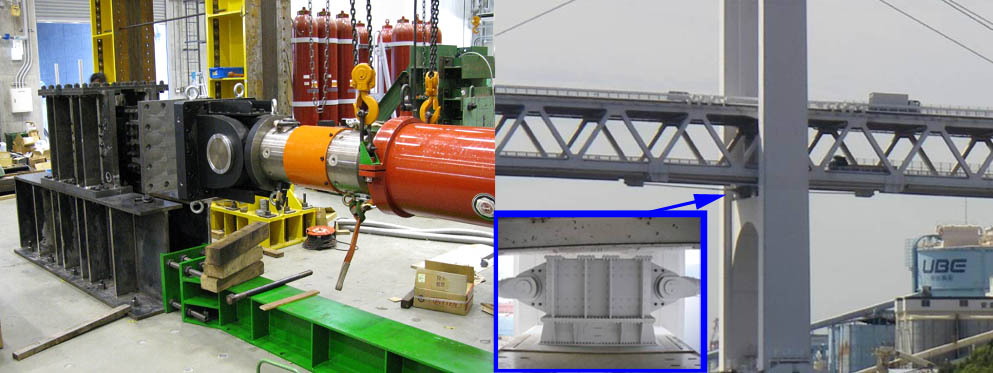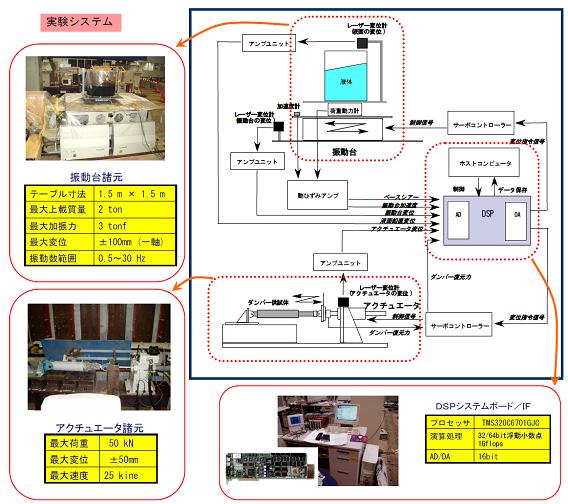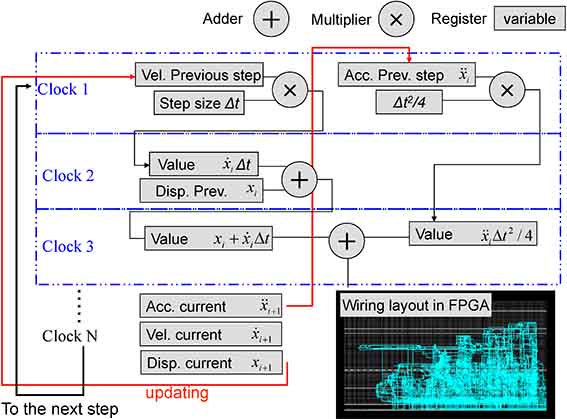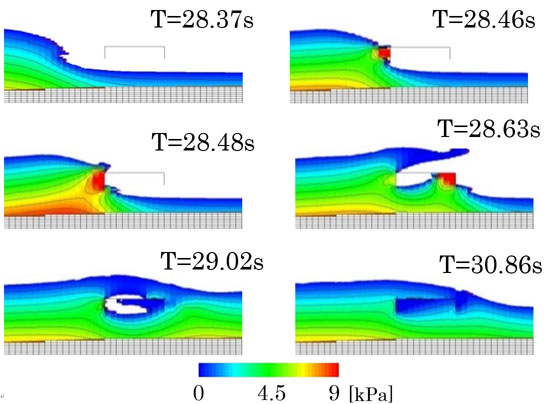 Dynamic response control methods and isolation devices/dampers for infrastructures Dynamic response control methods and isolation devices/dampers for infrastructures
Technologies for dynamic response control of structures, with the use of isolators and dynamic response control devices with efficient seismic input energy dissipation capability are essential elements in today's sophisticated design of infrastructure systems with enhanced seismic performance. Application is not limited to the design and construction; seismic retrofit of existing structures is a major area of practical implementation of these techniques. Investigation of the advanced isolation/control theories, development and performance verification ofstate-of-the-art isolation/control devices and dampers are the research areas of interest in this topic.

Figure 1 Experimental verification of laminated rubber damper for long-span cable stayed bridges and example of practical application.
 Development and verification of dynamic response control systems using real-time hybrid simulation Development and verification of dynamic response control systems using real-time hybrid simulation
The real-time hybrid simulation is an experimental verification technique to evaluate the dynamic response of large-scale structural systems, for which full-scale shake table testing is difficult. In this test method, the structural system is divided into a numerical substructure and an experimental substructure; response calculation of the numerical substructure with computers and dynamic loading test of structural elements using dynamic test equipments, including shake tables and dynamic actuators, are synchronously executed on a real-time basis by controlling the test procedure using the information of both processes, as a unified testing-computing dynamic simulation corresponding to the time evolution of actual dynamic phenomena. Implementation of experimental systems based on this advanced testing principle allows reliable performance validation in course of the development of advanced seismic response control devices and seismic isolation bearings.

Figure 2 An example of developed testing system for real-time hybrid simulation
 Design and implementatin of active control system and dynamic response simulator for infrastructures Design and implementatin of active control system and dynamic response simulator for infrastructures
Light-weight and long-span structures to secure large spaces, which have been put to use owing to the advance of construction technologies, are susceptible to unwanted vibration in general. For the case of infrastructures and buildings, the vibration problem affects the serviceability, safety and the environmental quality in terms of vibrational and acoustical comfort. Effectiveness of passive control devices, such as the Tuned Mass Damper (TMD) against vibrations due to impact loading including dropped objects, are regarded as unsatisfactory for this purpose, since the suppression of excitation with a wide frequency range requires additional techniques, and efficiency to non-stationary vibration characterized by the impact phenomenon is known to be inherently limited. Application of active control techniques can be a promising approach, by taking advantage of the use of sensors, which are fundamental technical components of structural monitoring, actuators, and controllers based on semiconductor device technologies for real-time computing, such as DSP/FPGA. Exploiting the model-base design methodologies for embeded systems and design of parallel processing logic circuit for fast numerical computation, implementation techniques for practical active and semi-active control systemsfor infrastructures are investigated.

Figure 3 Parallel-processing dynamic response simulator for structures and design of implementation to semiconductor logic device (FPGA)
 Assessment of tsunami wave forces acting on bridges Assessment of tsunami wave forces acting on bridges
Since the 2011 Tohoku Tsunami, forecasting and damage prediction of future tsunami events has become critical.Bridges are important infrastructure, particularly following disasters so that transport operations can run smoothly to provide necessary assistance. Prediction and assessment of strong tsunami wave forces acting on bridges are investigated to provide guidelines for future construction and mitigation measures.

Figure 4 Variation of pressure forces acting on a C-Channel bridge girder due to a tsunami wave attack
 Current research topics Current research topics
- Performance evaluation of bridges with response modification devices under bidirectional seismic action
- Displacement-based design method for bridges with energy dissipation devices
- Seismic response control of structures using bearings with multiple slide surfaces
- Investigation of deterioration and maintenance of aging elastomeric bearings
- Validation of numerical model of SPR-S bearings for dynamic response assessment
- Dynamic response control systems for floor impact noise reduction
- Development of real-time hybrid simulation system
|